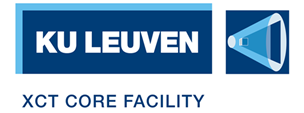Abstract
 This work describes a systematic alloy design strategy resulting in the development of a high strength aluminum alloy adopted for L-PBF. First, based on the composition of a reference Al-Cu-Mg alloy, three Al-Cu-Mg-Mn-Zr-based alloys were investigated using computational thermodynamic tools. Subsequently, the L-PBF processing behavior, microstructure, and concomitant mechanical properties of the L-PBF-fabricated alloys were investigated. Alloys with different compositions showed substantial differences in microstructure: the alloy without Zr addition showed a coarse columnar microstructure and suffered from solidification cracking, alloys with low to mediate Zr additions (1–1.98 wt%) showed a mixed columnar and equiaxed microstructure, while alloys with high Zr addition (3.72 wt%) showed a fully equiaxed microstructure, accompanied by a grain size reduction down to 0.7 ± 0.3 µm. All alloys containing ≥ 1.98 wt% Zr were crack-free. The L-PBF-processed Al-4.40Cu-1.51Mg-1.15Mn-3.72Zr (wt%) alloy showed an extended Zr solid solubility in the Al matrix of ~ 1.3 ± 0.1 wt%. Coherent primary Al3Zr particles with a cubic L12 structure were formed in all the Zr-containing alloys. The mechanical properties of as-built alloys increased consistently with increasing Zr contents from 0 to 3.72 wt%. The designed Al-4.40Cu-1.51Mg-1.15Mn-3.72Zr (wt%) alloy combined a yield strength of 561 ± 24 MPa, an ultimate tensile strength of 580 ± 16 MPa, and an elongation at break of 6.0 ± 1.3%. The exceptionally high strength of this alloy is attributed to a combination of grain refinement, Orowan, solid solution, and dislocation strengthening. The current work shows the intrinsic potential of rapid solidification occurring during L-PBF for the fabrication of geometrically-complex, high-strength lightweight parts made of ultra-fine-grained hyper-peritectic aluminum alloys containing transition element additions.
This work describes a systematic alloy design strategy resulting in the development of a high strength aluminum alloy adopted for L-PBF. First, based on the composition of a reference Al-Cu-Mg alloy, three Al-Cu-Mg-Mn-Zr-based alloys were investigated using computational thermodynamic tools. Subsequently, the L-PBF processing behavior, microstructure, and concomitant mechanical properties of the L-PBF-fabricated alloys were investigated. Alloys with different compositions showed substantial differences in microstructure: the alloy without Zr addition showed a coarse columnar microstructure and suffered from solidification cracking, alloys with low to mediate Zr additions (1–1.98 wt%) showed a mixed columnar and equiaxed microstructure, while alloys with high Zr addition (3.72 wt%) showed a fully equiaxed microstructure, accompanied by a grain size reduction down to 0.7 ± 0.3 µm. All alloys containing ≥ 1.98 wt% Zr were crack-free. The L-PBF-processed Al-4.40Cu-1.51Mg-1.15Mn-3.72Zr (wt%) alloy showed an extended Zr solid solubility in the Al matrix of ~ 1.3 ± 0.1 wt%. Coherent primary Al3Zr particles with a cubic L12 structure were formed in all the Zr-containing alloys. The mechanical properties of as-built alloys increased consistently with increasing Zr contents from 0 to 3.72 wt%. The designed Al-4.40Cu-1.51Mg-1.15Mn-3.72Zr (wt%) alloy combined a yield strength of 561 ± 24 MPa, an ultimate tensile strength of 580 ± 16 MPa, and an elongation at break of 6.0 ± 1.3%. The exceptionally high strength of this alloy is attributed to a combination of grain refinement, Orowan, solid solution, and dislocation strengthening. The current work shows the intrinsic potential of rapid solidification occurring during L-PBF for the fabrication of geometrically-complex, high-strength lightweight parts made of ultra-fine-grained hyper-peritectic aluminum alloys containing transition element additions.
More info here: https://www.sciencedirect.com/science/article/abs/pii/S2214860421003717
